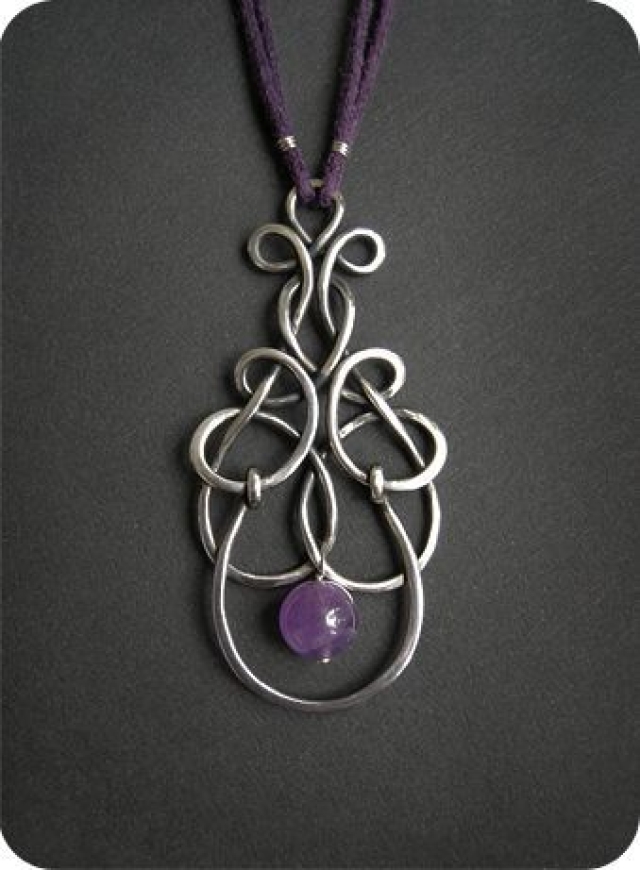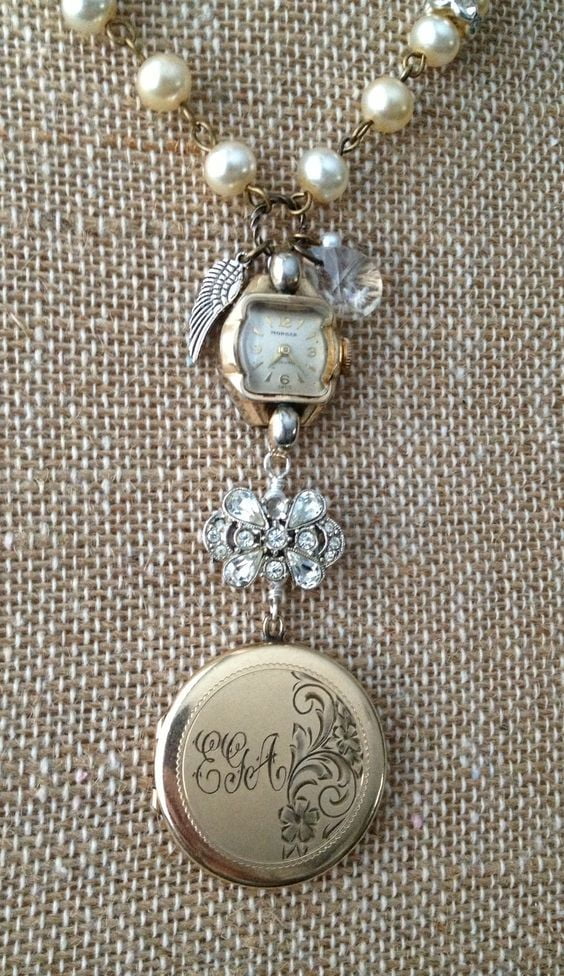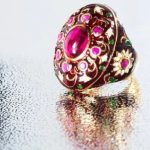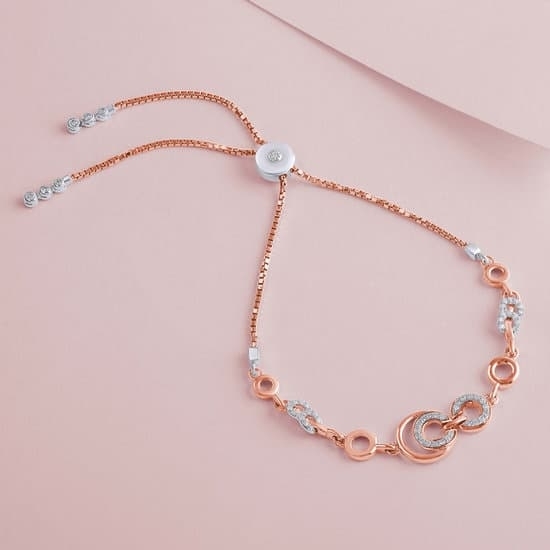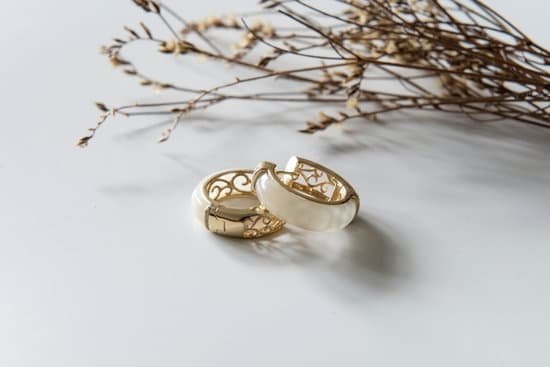Markings on platinum jewelry can be used to reveal useful information about the piece, such as the manufacturer, metal content, purity level and even age. These words or symbols are especially helpful when shopping for platinum jewelry and are often found inside the band of a ring. They may also appear on other locations depending upon the type of jewelry.
Throughout history, various markings have been used to accurately identify and distinguish this precious metal from others that look similar. Platinum has been a very popular choice for making jewelry since ancient devices with platinum were discovered in the tombs of South American royalty as far back as 500BC.
In order to make sure that people obtain the highest quality pieces possible, it helps to understand the various markings on platinum jewelry available today. Some of these include PC for Platina de Canada, indicating pure platinum content; PLAT for 95%+ pure ; PT950 for 95% pure ; PT900 for 90% pure ; and PT850 or PT800 for 80%-85% pure.
When it comes to identifying age, there are some additional ways of telling olders items apart from newer ones. For instance, most items dated before 1975 will read “Pt” followed by either “350” or “900” while those after this time should read either “PT” followed by either “950” or “900.”
These days many reputable jewelers also stamp their own unique identifiers onto each item they sell – typically above or below the purity grade mark on rings and inside pendant chains and necklaces. These professional looking marks often resemble triangles, squares or circles with numbers inside them used to identify both the manufacturer and date that an item was made.
They not only ensure that customers get what they pay for but also prevents fineness frauds such as goldsmiths diluting genuine gold articles with other metals of lesser value like copper and nickel. This practice ensures customers have access to legitimate items so they don’t fall victim to unscrupulous merchants who peddle low-grade product at bargain basement prices.
What is Platinum and Its Prevalence in Jewelry
Platinum is one of the most precious and valuable metals in the world, rarer even than gold. It has a bright white silver-like color which lets it blend perfectly with other metals and jewels. Its unique malleability and ductility make it perfect for use in jewelry pieces.
Platinum is often alloyed with other metals like palladium and copper to improve its strength and to make it easier to mould and shape into intricate designs. Because of this, platinum jewelry has become increasingly popular in recent years, particularly amongst those that want their rings, necklaces, bracelets and pendants to stand out from the crowd.
Markings on Platinum Jewelry
When buying platinum jewelry there are certain identifiable markings that will indicate if a piece is made of this precious metal or not. These markings usually appear as letters or numbers on the inner surface of a bracelet, ring or necklace:
- PT950 – This marking indicates 95% pure platinum
- PT900 – This marking indicates 90% pure platinum
- Pt850 – This marking indicates 85% pure platinum
- IRIDPLAT – This identification means 75% pure platinum alloyed with 25% iridium
Platinum jewelry offers numerous benefits for discerning customers over traditional gold or silver pieces. Not only is it incredibly durable meaning that it won’t ‘cloud over’ time like silver does when exposed too long to air and moisture but also most pieces require little maintenance because they do not tarnish nor corrode over time.
In addition, platinum jewelry is much lighter in weight than gold counterparts which makes wearing an item such as a full necklace comfortable and also fashionable as many find the color very desirable when paired with different gems due to its subtlety.
Platinum smithy have more tools at their disposal due to its malleability but this can create designs for today’s jewelers who want intricate pieces that no other metal offers them. Jewels can be set much more deeply into the metal via various engravings such as milgrain beading so that they are more secure from everyday wear and tear, something much harder to achieve on softer gold alloys like 10k or 14k.
Finally an added benefit of choosing a piece made with this material rather than any other is its hypoallergenic nature i.e., it does not cause skin irritations which react badly against some wearers (particularly people sensitive against conventional metals such as nickel).
Different Types of Markings on Platinum Jewelry
Platinum jewelry bears different markings which serve as an integral part in its identification. These markings vary from manufacturing origins to the metal content being used in the piece of jewelry itself. Here is a list detailing those various markings:
- Pt
- PT 900 or 950
- pt 850
- Manufacturer Markings
This marking on platinum jewelry typically denotes that it is made of 99% pure platinum or 95% pure since these two content levels are the ones considered the highest quality available.
PT 900 and 950 denote that the piece is 91.5% pure for 900 and 95% pure for 950 respectively. This means that other metals like ruthenium have been added to ensure strength and toughness for everyday wear.
pt 850 denotes a purity level of 85%, this means however that although some other coins may be present, they are still minor (less than 15%) compared to the amount of platinum being used.
Jewelers often leave marks on the piece to identify who manufactured it such as brand names or initials, thus allowing them to track their products.
Popular Markings for Platinum Jewelry
Platinum is an extremely popular metal choice for jewelry. It’s a precious metal that’s strong and durable which makes it ideal for rings, bracelets, earrings and other items that are worn often. Platinum jewelry is also highly valuable and is marked with numbers to indicate the percentage of platinum along with other components used in its makeup. Here is some helpful information about the most popular types of markings found on platinum jewelry items.
Pt
The Platinum mark appearing on jewelry pieces indicates that the item contains a minimum of 95% pure platinum alloyed with small amounts of additional metals to give it strength and durability. Pieces with a Pt mark usually have 950 stamped on them as well indicating 95% pure platinum. Jewelers like to use this stamp because platinum does not tarnish or corrode easily making it highly desirable among those who purchase jewelry due to its long-lasting nature.
Pt/Ir
This marking tells us that the piece contains a mix of at least 90% pure platinum and 10% palladium or iridium depending on the maker’s preference. Palladium is less expensive than platinum yet adds strength and durability which helps when making thinner pieces or complex designs, so sometimes this particular combination is preferred by makers over just using plain pt alone.
The letter Ir means iridium which is another white metal element similar in many ways to palladium but heavier and stronger giving larger more intricate pieces a greater degree of resistance against wear and tear while maintaining its pristine appearance over time.
Pt/Ct
This marking means that the piece contains anywhere from 50-90% pure platinum alloyed with 10-50% gold, usually 18K gold (75% gold). This allows for custom colors to be created as well as allows for cheaper prices since gold costs significantly less than platinum does per gram weight measurement making this combination more attractive from a cost perspective.
The golden hue acts an additional contrast meaning more glimmering elements can be included within the overall design layout lending further complexity to any piece created in this manner by jewelers.
Understanding Hallmarks and Crown Symbols on Platinum Jewelry
Platinum is a precious metal, rarer than gold and highly valuable. Its purity is often too high to be measured accurately which makes it ideal for creating jewelry pieces such as engagement rings, necklaces and earrings. To help identify the authenticity of platinum jewelry, manufacturers stamp marks on their products to indicate its purity and other details about it.
What are Hallmarks?
Hallmarks are symbols stamped onto a piece of jewelry that indicates the quality of materials used in its making including the type of metal and its carat rating. Platinum hallmarks include the number “950” indicating that it has 95 parts pure Platinum per 100 parts alloy material, along with various other symbols denoting further details about the item such as weight or date of manufacture.
In many countries, these stamps are usually legally required to appear on items intended for sale in order to verify that they contain only genuine Platinum material and not an imitation.
Symbols Used For 950 Platinum Jewelry
- A crown symbol next to the number ‘950’ indicates that an item was made from 95% Platinum alloy and 5% iridium/ruthenium.
- PT950, this abbreviation stands for ‘Platinum 950’ – meaning a Platinum alloy containing 95% pure Platinum.
- C, this symbol may be inside or outside a circle and usually denotes compliance with European mandates for consumer protection.
- (C), this symbol appears inside a circle on items produced from sterling silver or base metals but adorned with small pieces of Platinum – indicating a lower quality made product.
Furthermore there are some additional marks which may feature alongside those mentioned above – such as letters A-Z or 0-9 which denote where and when an item was manufactured. This is sometimes referred to as the Manufacturing Mark, indicating country of origin and year of manufacture, although this is not necessarily always present on pieces especially if they were produced by independent artisans rather than large manufacturing companies.
Care and Maintenance for Markings on Platinum Jewelry
Proper care and maintenance is essential for maintaining the markings on platinum jewelry. There are many cleaning preparations available in most stores to help keep platinum looking beautiful, but one needs to read the instructions carefully as some of these products can damage and fade markings. When using a commercial cleaner, it is important to test a small inconspicuous area first before using it widely. It is also recommended to avoid aggressive chemicals such as bleach when cleaning platinum jewelry.
Polishing and Cleaning
In order to maintain its original shine and markings, platinum jewelry should be cleaned regularly with warm water and soap, as well as being dried with a soft cloth afterward. A silver polishing cloth or aluminum foil may then be used until the desired finish is achieved. One should avoid using incredibly rough substances such as steel wool as this could lead to scratches and fading of any engravings or markings on the piece of jewelry.
Storage and Handling
When not in use, platinum jewelry should be stored away from direct sunlight if possible to protect it from any possible UV damage that may fade or distort the markings over time. Each piece should also be stored separately in an airtight container or plastic bag to prevent oxidation reactions that could discolor the metal itself and cause worn areas which could affect any inscriptions on them as well.
Finally, one needs to remember that since Platinum is a very precious material special care must be taken when handling the pieces in order not to unintentionally damage or dent them.
How to Identify Fake Markings on Platinum Jewelry
Platinum is a rare and valuable metal used for creating jewelry pieces that are intended to last a lifetime. One of the most important things when it comes to jewelry crafted from platinum is that customers can trust the authenticity and value of the piece they’ve purchased.
The tell-tale sign of a platinum jewelry piece is specific markings stamped onto the item, but these markings can also be faked by unscrupulous sellers in an attempt to pass off counterfeit items. To help buyers feel more confident in their purchase, here are some tips on how to identify fake markings on platinum jewelry.
Do Your Homework
It is important to do your research on the type of marking used on genuine items as there are different hallmarks depending on where they were made or what those particular pieces contain. In addition, look at a variety of photos online so you can develop an eye for what bona fide Platinum stamped items look like before making any purchases.
Pay Attention to Detail
When examining any potentially questionable markings, pay careful attention to even the smallest details such as color, size and font style used in relation with the stamping itself. Genuine marks will always appear sharp and deep-set against the metal but imitation marks may appear lighter, less consistent or possibly misshapen in comparison.
Fake stamps typically appear exaggerated and oversized while authentic stamps tend to appear neat and unobtrusive next to other designs etched into pieces such as initials or monograms that personalize items for customers.
Check Online Resources
If you have access to a range of helpful tools such as databases or magnifying views, make use of them. Magnifying views will allow you see minute details more clearly while databases provide information so buyers can simply search for a hallmark by name or type which may give clues about certain authentication seals from different countries or regions that only authenticate diamonds above certain grades and weights.
Pros and Cons of Markings on Platinum Jewelry
Platinum is a precious metal that has long been used in jewelry. It’s known for its strength, durability and beautiful shine. Many people are attracted to this metal because it looks elegant and does not tarnish or fade over time. As such, many pieces of platinum jewelry come with markings or stamps that indicate the purity of the metal.
The Pros
- Stamping or imprinting of signals helps ensure the authenticity of the item
- Economical way to add value to jewelry without breaking your budget
- Markings help consumers determine if they are getting pure platinum or an imitation when making a purchase
The Cons
- If done incorrectly, the markings can visually ruin the look of a piece of jewelry by drawing too much attention away from the design itself
Tips for Buying Platinum Jewelry with Markings
When it comes to buying fine jewelry such as Platinum, understanding the marking is essential. Accurate and consistent markings help ensure the quality and value of the piece. Here are some tips to consider when purchasing Platinum pieces of jewelry with marks:
- A hallmark on Platinum should contain three pieces of information – its precious metal content in parts per thousand (ie 950 Plat for 95% pure Platinum), its fineness (an approved abbreviation of mark used only for precious metals) and an Assay Office Mark (unique to each office).
- The presence of hallmarks greatly helps assess a jeweler’s credibility and adds value to the product.
- Jewelry marked with a PT950 or PT900 stamp indicates that it is made from pure Platinum.
In addition, customers can check out the National Precious Metals Marking Act which was passed by Congress in July 1955. All jewelry items should bear a clear stamp designating the purity level or fineness of precious metals sold within US territories. This ensures that consumers are given accurate representations of the items they purchase.
Where to Look for Hallmarks on Jewelry?
Hallmarks can be generally found near the clasp and fastening points of necklaces, bracelets or rings. Additionally they can also be located inside hidden areas like inside watch cases or beneath tongues on clasps, fastenings or body clips. Sometimes, carvings may form part of complex designs like foliage patterns but still retain legible markings.
For large decorative items such as serving plates and tea services used during banquets, ideally marks should include accompanying specification such as weight, dimensions, serial numbers, production dates etc. Some manufacturers embed special authentication seals into their products containing unique numbers which can be traceable through issuing authorities ensuring complete transparency about place and time of manufacture/importation.
Conclusion
Platinum jewelry can be difficult to identify due to its lack of color. However, there are a few ways one can determine whether a piece of jewelry is actually made from platinum. One way is to look for the markings on the inside of the piece.
Platinum jewelry is usually stamped with “Plat” or “PT”, which stands for platinum, and PT950 or Plat950, which indicates that 95% of the metal in the piece is platinum. Another marking one might see on a piece of platinum jewelry is “irid plat”, which means that the item has an iridium-platinum alloy coating. Platinum jewelry may also have a hallmark such as an elephant or crown logo indicating that it was made by a reputable manufacturer.
In addition to examining markings on pieces, one can also analyze the weight and density of their platinum jewelry compared to other metals. Platinum pieces tend to be heavier and denser than gold pieces of similar size. A third method some use to identify platinum items involves examining natural gems or diamonds set into them for signs of tarnish, since gold and silver are prone to discoloration when exposed to air while platinum casings remain bright and polished over time.
Finally, if all else fails, professionals can use testing equipment like X-ray fluorescence (XRF) machines or electronic scanners were developed in order to provide accurate results on what type/kinds of metal you have on hand without damaging any existing markings.
XRF machines measure how well different wavelengths are absorbed by certain materials before providing a breakdown of elements present within each scan sample-including analyzing precious metals like gold and platinum accurately if the settings are calibrated correctly according to standards set out by trade organizations like SSEF (Swiss Gemmological Institute).
Additionally, analysing spectral scans with electronic microscopes allows jewelers or appraisers gain more insight into very small details otherwise undetectable with standard eye examinations only-enabling them make important decisions about appraisal values indeed based upon accurate evidence obtained through these highly important and specialized forms analysis tools available today.

Welcome to my jewelry blog! My name is Sarah and I am the owner of this blog.
I love making jewelry and sharing my creations with others.
So whether you’re someone who loves wearing jewelry yourself or simply enjoys learning about it, be sure to check out my blog for insightful posts on everything related to this exciting topic!

